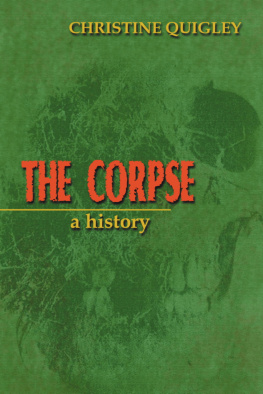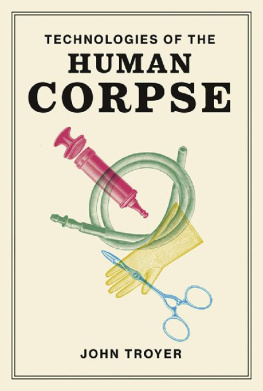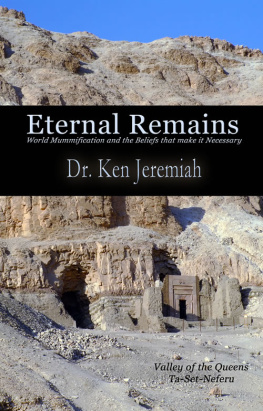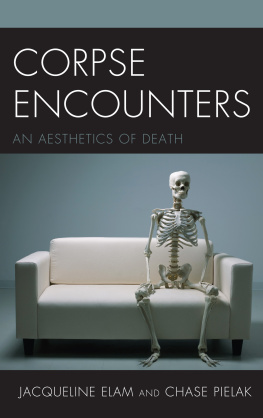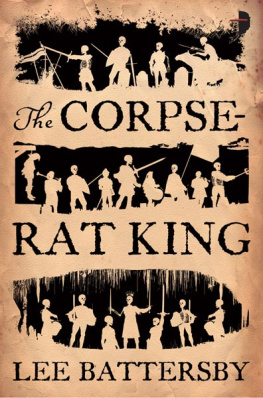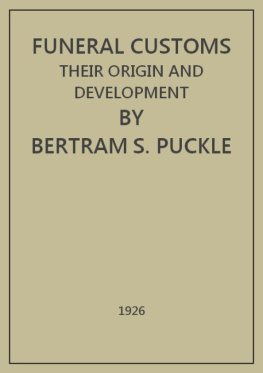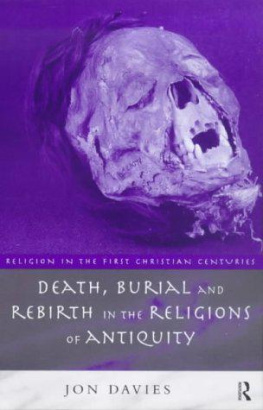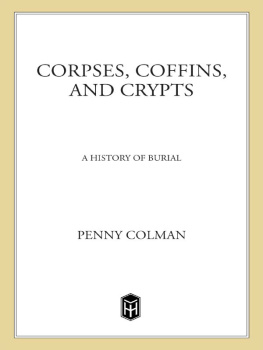
Dead person, New York. Photo by Berenice Abbot, 1930. Reprinted with permission from Berenice Abbot/Commerce Graphics Ltd., Inc.
THE CORPSE
A History
by
CHRISTINE QUIGLEY

McFarland & Company, Inc., Publishers
Jefferson, North Carolina, and London
LIBRARY OF CONGRESS CATALOGUING DATA ARE AVAILABLE
BRITISH LIBRARY CATALOGUING DATA ARE AVAILABLE
e-ISBN: 978-1-4766-1377-2
1996 Christine Quigley. All rights reserved
No part of this book may be reproduced or transmitted in any form or by any means, electronic or mechanical, including photocopying or recording, or by any information storage and retrieval system, without permission in writing from the publisher.
On the cover: Vegetative growth in a skull found at the side of a road in Massachusetts (photograph courtesy of the Smithsonian Institution)
McFarland & Company, Inc., Publishers
Box 611, Jefferson, North Carolina 28640
www.mcfarlandpub.com
For you, Cris
Introduction
Although civil and legal institutions do not agree on exactly when life ends, most people are able to recognize a corpse without referring to a dictionary.
Kim Long and Terry Reim, Fatal Facts: A Lively Look at Common and Curious Ways People Have Died
Overview
Death. The word conveys a threat to each of us. One day our heart will cease to beat. One day the electrical activity in our brain will draw to a close. One day we will no longer think, work, play. We wont even relax as we know it now. Each of us will become a corpse. We will make the transition from animate to inanimate. As a corpse, we will not require food, we will not require water, and we will not require air. We will, however, require disposal or preservative treatment, or we will contaminate the environment of those who continue to live. We trust the living to package our body and deposit it in the ground, incinerate it, or apply whatever method prevails in our culture. We may make some decisions in advancepay for a plot or complete an organ donor cardbut many processes to which our remains will be subject are beyond our control before and after death. Will we be autopsied? Exhumed? Unless we are cremated or mummied, we will surely decay. Unless we make other arrangements, we will most likely be embalmed. If we die in the wrong place at the wrong time, our body might be cannibalized, get scavenged by animals, or remain unidentied. If we die at the wrong hands, our body may be violated, dismembered, and discarded. Be assured that our corpse will not feel any of these things. The satisfaction, grief, or outrage lie with our survivors.
Corpses may be used for everything from personal pleasure to prolonging the life of a stranger. They have been ransomed and sold, exposed to public ridicule and public adoration. Their parts have been preserved in jars and in churches. And, like the living, some corpses have been discriminated against. Because where there are humans, there are (or will be) human remains, a history of the corpse spans time and place. The fact of death injects the corpse into both art and religion, as well as occasionally into our daily lives, where it can be symbolic of our own mortality or a focus for our grief over the death of the person who used to inhabit it. Either way, the dead can repulse or attract. Their pervasive presence and elusive nature, in addition to sheer volume, make corpses a worthy study. This book will document the roles that corpses have played in our history and will at the same time bring to light the techniques to which we have subjected them.
Certication of Death
A corpse becomes official when a death certicate is completed by the attending physician, coroner, or medical examiner and led with the local government. In the U.S., a death certicate is required for all deaths except those of fetuses weighing less than 500 grams, which are considered medical specimens. A special fetal death certicate is usually required for stillbirths. The regular death certicate, which is rejected if not lled out in black ink, varies from state to state but usually requires the following information about the deceased: name, sex, race, and citizenship; date and place of death or date and place the body was found; date and place of birth (if known), age or approximation, and Social Security number; marital status, name of surviving spouse, and parents names; occupation and residence; cause of death and contributing factors, manner of death (natural, accident, suicide, homicide, or undetermined), and time of death; whether an autopsy was performed; method of bodily disposition; name and address of funeral home and cemetery or crematory; and signature of the certier.
The legal time of death is the moment at which death is pronounced, whether it follows the failure of resuscitative efforts or the discovery of a body. Except in cases of legal execution and people dead on arrival at the hospital, death may be pronounced and the time recorded by a paramedic, nurse, or police officer. In international waters, pronouncement may be made by the captain of the ship. The death must be certied, however, by the coroner or medical examiner, or under specied circumstances by the attending physician. A physician may complete the death certicate when a person dies of a known terminal illness, under hospice or nursing home care, or in the hospital (though not during treatment or surgery). If the cause of death is questionable or the results of the autopsy or other tests are not yet available, the cause may be listed as pending until it can be determined. If a U.S. citizen dies outside the United States, as approximately 8,000 Americans do each year, the next of kin is furnished by the nearest American consular office with a report of death, which has the legal status of a death certicate. Until the death certicate is led and a certicate of disposition (a burial or cremation permit) issued by local authorities, the corpse may not legally be disposed of. In the U.S., disposal is the responsibility of next-of-kin in the order specied by state law (usually surviving spouse, adult children, parents, siblings).
Death Rates and Causes
It is from death certicates that annual statistics are compiled by the U.S. Center for Health Statistics, allowing us to calculate our nationwide death rate at more than 2 million per year and the worldwide death rate at some 50 million annually. In 1989, it was calculated that three people in the world died every two seconds. In 1990, a total of 49,936,000 people died, 13.1 million of them children under the age of ve, and 9.4 million of these under one year of age. In 1991, a total of 50,289,000 people died, the majority (38,888,000) in developing countries. In the same year, 718,000 Americans died of heart disease, 514,000 died of cancer, 144,070 died of cerebrovascular disease, 91,700 died accidental deaths, 30,200 took their own lives, 29,850 died of AIDS, 27,440 were murdered or killed by legal intervention, and 14 of the 2,482 men and women on death row in the U.S. were executed. Of the 43,500 motor vehicle fatalities recorded in the U.S. in 1991, 18,500 resulted from the collision of two or more cars and 7,000 were pedestrians struck and killed. In 1992, there were 2,183,000 deaths in the U.S., 1,129,600 of them males and 1,053,590 of them females. Of this number, more than 1,000,000 were age 75 or older. Estimates in the same year put the number of abortions worldwide at 150,000 per day.
Next page
